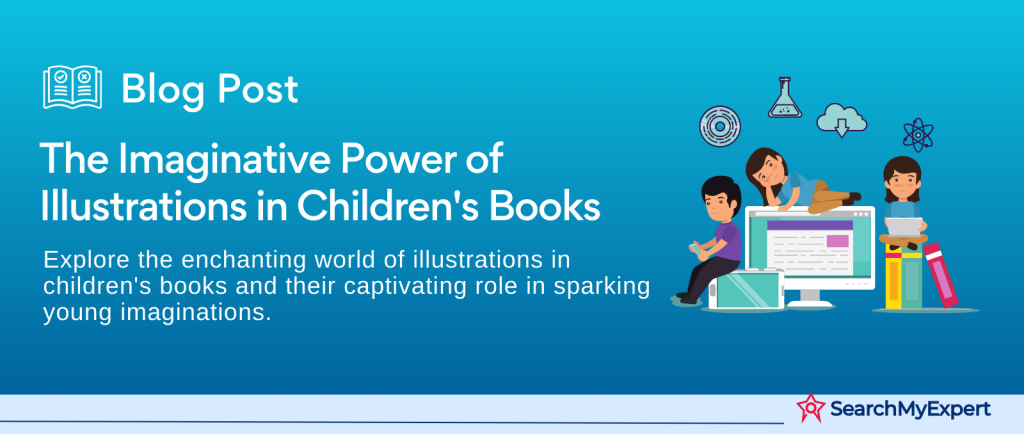The Enchanting World of Children’s Book Illustrations: A Gateway to Imagination and Understanding
In the magical realm of children’s literature, illustrations play a pivotal role in capturing the hearts and minds of young readers. These vibrant and imaginative visuals do more than just accompany the text; they breathe life into stories, making them more engaging and accessible to children. Illustrations in children’s books are not mere decorations but are integral to the storytelling process, serving as a bridge between the young reader’s imagination and the narrative.
Engaging Young Readers: The Power of Visual Storytelling
Illustrations in children’s books serve as a crucial tool in engaging young minds. The bright colors, whimsical characters, and vivid landscapes are not just appealing; they draw children into the book, encouraging them to turn the page. For many children, especially those who are yet to master the skill of reading, illustrations provide a visual narrative that they can follow, making the experience of reading more enjoyable and less daunting.
Supporting Narrative Understanding: A Picture is Worth a Thousand Words
For young readers, understanding the narrative can sometimes be challenging, especially when the text is complex. Illustrations play a critical role in supporting narrative understanding. They provide context to the story and help in explaining concepts and events that words alone might not fully convey. By seeing the characters and settings, children can better grasp the storyline, making the reading experience both educational and enjoyable.
Sparking Imagination and Creativity: Opening the Doors to Wondrous Worlds
One of the most profound impacts of illustrations in children’s books is their ability to spark imagination and creativity. Each picture opens a door to a new world, inviting young readers to explore realms beyond their wildest dreams. The illustrations encourage children to imagine the story beyond the pages, fostering creativity and out-of-the-box thinking.
Building Emotional Connection: Illustrations That Touch the Heart
Illustrations also play a vital role in building an emotional connection with the story. The expressions of the characters, the mood of the settings, and the play of colors all contribute to creating an emotional response in the reader. This connection is crucial in helping children understand and empathize with different emotions and situations, aiding in their emotional development.
The Power of Picture: Key Functions of Illustrations in Children’s Books
Illustrations in children’s books are not just aesthetic additions; they are narrative powerhouses that play multiple critical roles in storytelling. From breathing life into characters and settings to enhancing mood, and even introducing new concepts, illustrations are indispensable in the realm of children’s literature.
Bringing Characters and Settings to Life
One of the most captivating functions of illustrations is their ability to bring characters and settings to life. When a child opens a book, they are not just looking at mere drawings; they are meeting new friends and traveling to new places. Illustrations give form and personality to characters, making them relatable and memorable. A well-drawn character can express a range of emotions, from joy to sadness, anger to fear, helping young readers understand and empathize with different feelings.
The settings in a book, be it a dense forest, a bustling city, or a whimsical fantasy land, are also vividly depicted through illustrations. These visual representations help children to imagine the world in which the story takes place, making it more real and immersive. The colors, textures, and overall style of the illustrations contribute significantly to the feel of the setting, whether it’s a dark, spooky night or a bright, cheerful day.
Enhancing Mood and Atmosphere
Illustrations play a crucial role in setting the mood and atmosphere of a story. The use of colors, lines, and lighting in illustrations can evoke different emotions and create a specific ambiance. For example, warm, bright colors can create a feeling of happiness and safety, while darker, muted colors might be used to establish a sense of mystery or sadness.
The style of the illustrations also contributes to the mood. A soft, watercolor illustration might convey a gentle, dreamy atmosphere, whereas bold, dynamic lines could depict energy and excitement. This visual mood-setting is essential in children’s books, as it helps young readers to not only see but also feel the story.
Providing Visual Metaphors and Symbolism
Illustrations can be a powerful tool for conveying deeper meanings and themes through visual metaphors and symbolism. This aspect of illustration allows for a more complex and layered storytelling experience, even for young readers. For example, an illustrator might use a specific animal or color to represent a particular trait or emotion, like wisdom or bravery.
Symbolism in illustrations can also help in discussing more complex or abstract themes in a way that is accessible to children. Through symbolic imagery, illustrators can communicate ideas about love, friendship, loss, or growth without needing to explicitly state them, allowing young readers to interpret these themes in their own way.
Clarifying Plot Points and Adding Details
Another critical function of illustrations is to clarify plot points and add details to the story. Sometimes, text alone can leave certain aspects of the story to the reader’s imagination, which can be challenging for younger children. Illustrations can fill in these gaps by visually depicting scenes, actions, or interactions.
These visual details can be especially helpful in complex stories, where understanding the sequence of events or the relationship between characters is crucial. Additionally, illustrations can add layers of detail that enrich the story – showing the expressions on characters’ faces, the intricate details of a magical gadget, or the subtle changes in a landscape as the story progresses.
Introducing New Concepts and Vocabulary
Illustrations are an excellent medium for introducing new concepts and vocabulary to young readers. They provide a visual context that makes it easier for children to understand and remember new words and ideas. For instance, a book about nature might introduce terms like “habitat” or “ecosystem” with illustrations showing different animals in their natural environments.
Furthermore, for non-fiction children’s books, illustrations are indispensable in explaining scientific, historical, or cultural concepts in a way that is engaging and easy to understand. They can break down complex ideas into simpler visual elements, making learning a fun and exciting experience for young readers.
A Canvas of Styles: Exploring Genres and Techniques in Children’s Book Illustrations
The world of children’s book illustrations is as diverse and colorful as the imaginations they inspire. Different genres and age groups demand unique styles and techniques, each tailored to communicate effectively with its intended audience. From the whimsical watercolors in picture books to the informative diagrams in educational materials, the art of illustration in children’s literature is a vast and varied landscape.
Picture Books: A World of Whimsy and Wonder
Picture books are often a child’s first introduction to the world of reading and art. They rely heavily on illustrations to tell the story, with images taking center stage.
- Watercolor Techniques:
Watercolor illustrations are a staple in picture books due to their soft, flowing qualities. They create a dreamy, ethereal look that can be both vivid and subtle. This technique is excellent for evoking emotions and creating a magical, otherworldly feel. - Bold Colors and Simple Lines: For younger children, illustrations with bold colors and simple lines are often used. These elements are visually striking and easy for little eyes to focus on. They also help in distinguishing characters and settings clearly.
- Cartoon Styles: Cartoon-style illustrations are another popular choice in picture books. These are characterized by exaggerated features and expressions, which are great for storytelling. They can be humorous and engaging, making the book more appealing to young children.
Chapter Books: Growing with the Reader
As children grow older and transition to chapter books, the illustrations evolve too. These books typically have fewer illustrations, but they play a crucial role in enhancing the story.
- Realistic Illustrations: Chapter books often use more realistic illustrations. These can be detailed and lifelike, helping older children visualize more complex stories and characters.
- Semi-Realistic Styles: Semi-realistic illustrations strike a balance between realistic and stylized art. They can depict real-world settings and characters with a touch of whimsy or exaggeration.
- Graphic Novel Styles:
Many chapter books incorporate elements of graphic novels, with dynamic illustrations that resemble comic book art. This style is particularly effective in engaging reluctant readers, as it provides a visually stimulating experience.
Board Books: Foundations of Learning
Board books are designed for the youngest of readers. They are durable, often with tactile elements, and have illustrations that cater to early learning.
- Simple Shapes and High Contrast:
Illustrations in board books often feature simple shapes and high contrast. These design elements are ideal for developing visual perception in infants and toddlers. - Tactile Elements: Many board books include tactile elements like raised drawings or different textures. These interactive features encourage sensory exploration and can aid in motor skill development.
Educational Books: Learning through Illustration
Educational books for children use illustrations to explain concepts, provide examples, and engage young learners.
- Informative Diagrams: These are crucial in educational books, especially those dealing with science or geography. Diagrams can break down complex concepts into understandable visuals.
- Step-by-Step Illustrations:
For educational books that teach skills or processes (like crafts or cooking), step-by-step illustrations are vital. They guide the reader through each stage of the process, ensuring clarity and understanding
The Collaboration: Writers and Illustrators Joining Hands in Children’s Literature
The creation of a children’s book is often a symphony of two creative minds: the writer and the illustrator. This collaboration is a delicate dance of words and visuals, where both parties work together to bring a story to life. The process is intricate, requiring clear communication, a shared vision, and a balance between guidance and artistic freedom.
Clear Communication and Shared Vision
The cornerstone of a successful collaboration between a writer and an illustrator lies in clear communication and the establishment of a shared vision.
- Understanding the Story:
It begins with the illustrator understanding the essence of the story. The writer shares the manuscript, along with any specific ideas or visions they have for the illustrations. This might include the portrayal of characters, settings, or key scenes. - Regular Communication:
Regular communication throughout the process is crucial. This can be through meetings, emails, or even mood boards. Both parties should feel comfortable discussing ideas, giving feedback, and making suggestions. - Shared Vision: Developing a shared vision for the book is essential. This doesn’t mean that the illustrator merely follows the writer’s instructions. Instead, it’s about understanding the tone, theme, and message of the story and how best to visually represent it.
Matching Artistic Style to Story Tone and Theme
An illustrator’s style can significantly influence the reader’s perception of the story. Therefore, matching the artistic style to the story’s tone and theme is a critical aspect of the collaboration.
- Consistency in Style:
The illustrator’s style needs to be consistent with the tone of the story. A whimsical tale might call for bright, vibrant illustrations, whereas a more serious story might require a subtler, more nuanced approach. - Enhancing the Theme:
The illustrations should also reflect and enhance the book’s theme. For a story about nature, for instance, an illustrator might use earthy tones and detailed depictions of flora and fauna. - Adapting to Different Genres:
Children’s books cover a wide range of genres, and an illustrator might need to adapt their style accordingly. The style that works for a fantasy story might not suit a historical fiction narrative.
Leaving Room for Creative Interpretation and Artistic Freedom
While it’s important for the illustrator to align with the writer’s vision, leaving room for creative interpretation and artistic freedom is equally crucial.
- Illustrator’s Interpretation:
The illustrator brings a unique perspective to the story. Allowing them the freedom to interpret the narrative can lead to more creative and engaging illustrations. This fresh perspective can add layers to the story that the writer might not have envisioned. - Balancing Guidance and Freedom:
The writer should provide guidance but also trust the illustrator’s artistic judgment. This balance is key to a productive collaboration. Too much control can stifle creativity, while too little guidance can lead to a disjointed final product. - The Magic of Surprise: Sometimes, the most memorable aspects of a children’s book come from the illustrator’s spontaneous ideas. These surprises can make the book more enchanting and distinctive.
More Than Just Pretty Pictures: Thematic Impact of Illustrations in Children’s Books
Illustrations in children’s books are far more than mere embellishments. They are powerful tools that can help tackle complex themes and sensitive topics, making them accessible and understandable to young readers. Through thoughtful and creative illustrations, books can address diversity and inclusion, social and emotional learning, overcoming challenges, and even complex subjects like environmental awareness and historical narratives.
Diversity and Inclusion: Reflecting the World Through Art
Illustrations play a pivotal role in promoting diversity and inclusion in children’s books.
- Representation Matters:
Illustrations provide a visual representation of different cultures, ethnicities, and abilities. Seeing characters that look like them can be incredibly affirming for young readers. It helps in building a sense of belonging and self-esteem. - Breaking Stereotypes: Illustrators have the power to break stereotypes by portraying characters in non-traditional roles or settings. This broadens children’s understanding and acceptance of the diverse world around them.
- Cultural Authenticity: Illustrations can also educate about different cultures through accurate and respectful depictions. This includes showcasing traditional attire, festivals, or everyday life, providing a window into different ways of living.
Social and Emotional Learning: Illustrations as Teaching Tools
Children’s books often serve as tools for social and emotional learning, with illustrations playing a key role.
- Emotional Expression:
Through the depiction of characters’ facial expressions and body language, illustrations can convey a range of emotions. This helps children identify and understand their own emotions and those of others. - Social Situations:
Illustrations can depict various social situations and interactions, teaching children about empathy, cooperation, and conflict resolution. - Moral Lessons: Many children’s books aim to impart moral lessons. Illustrations can reinforce these messages, making them more memorable and impactful.
Overcoming Challenges and Celebrating Differences
Illustrations can be instrumental in teaching children about overcoming challenges and celebrating differences.
- Resilience and Bravery: Stories of characters facing and overcoming challenges can be powerful. Illustrations that accompany these narratives can further empower children, teaching them about resilience and bravery.
- Celebrating Uniqueness: Books that celebrate differences can help children appreciate diversity in themselves and others. Illustrations that highlight these differences in a positive light can foster a sense of acceptance and inclusivity.
Environmental Awareness and Historical Narratives
Illustrations can also be used to educate children about the environment and history in an engaging way.
- Environmental Education: Illustrations can depict various aspects of nature and environmental issues. This visual representation can be a potent tool for teaching children about the importance of environmental conservation.
- Bringing History to Life:
For historical narratives, illustrations can bring history to life, making it more relatable and engaging for young readers. They can provide visual context to historical events, making them easier to understand.
Beyond the Page: The Evolution of Children’s Book Illustrations in the Digital Age
The advent of technology has revolutionized the landscape of children’s book illustrations, expanding the boundaries of storytelling and engagement. In this digital age, interactive e-books, augmented reality experiences, and the fusion of traditional and digital art forms have transformed how stories are told and experienced, offering new dimensions of interaction and immersion for young readers.
Interactive E-Books and Apps: A New Realm of Engagement
The rise of interactive e-books and apps has opened up a world of possibilities for children’s book illustrations.
- Enhanced Interactivity: Interactive e-books and apps allow children to engage with the story in ways that traditional books cannot. Features like clickable elements, animations, and sound effects add a layer of interactivity that can enhance understanding and engagement.
- Personalized Experiences:
These digital platforms offer personalized reading experiences. Children can choose different paths in the story, select characters, or even change aspects of the illustrations, making the reading experience more engaging and personal. - Accessibility and Convenience:
Digital books and apps also make reading more accessible. They can be downloaded on various devices, making it easier for children to access a wide range of books, especially in regions where physical books are scarce.
Animation and Augmented Reality Experiences: Bringing Stories to Life
Animation and augmented reality (AR) have taken children’s book illustrations to a new level of excitement and engagement.
- Animation in Storytelling:
Animated illustrations in digital books can bring characters and scenes to life. Movement and sound add depth to the story, making it more captivating for young readers. - Augmented Reality:
AR in children’s books offers an immersive experience. By using a device, children can see illustrations leap off the page, adding a 3D aspect to the reading experience. This technology can make learning more interactive and fun, especially for educational content. - Educational Benefits: AR and animation can also have educational benefits. They can make complex concepts easier to understand and more engaging, especially in subjects like science and history.
The Blurred Lines Between Traditional and Digital Art
The integration of technology in children’s book illustrations has blurred the lines between traditional and digital art forms.
- Combining Techniques:
Many illustrators now combine traditional drawing and painting techniques with digital tools. This fusion allows for greater creativity and versatility in illustrations. - Expanding Creative Possibilities:
Digital tools have expanded the creative possibilities for illustrators. They can experiment with colors, textures, and layouts more easily, pushing the boundaries of traditional illustration. - Preserving the Essence of Traditional Art: Despite the use of digital tools, the essence of traditional art is often preserved. The warmth, charm, and character of hand-drawn illustrations are still valued and sought after.
A Lasting Legacy of Children’s Book Illustrations
As we reach the conclusion of our exploration into the enchanting world of children’s book illustrations, it’s evident that these visual elements play an indispensable role in shaping the reading experiences of young minds. Illustrations in children’s books are not just mere complements to the text; they are a vibrant and impactful form of art that significantly contributes to a child’s developmental journey and fosters a lifelong love for literature.
The Significant Role of Illustrations in Children’s Literature
- Gateway to Early Reading:
Illustrations serve as an essential gateway to early reading. They provide visual clues that help children decode text and comprehend stories, making reading a more enjoyable and less intimidating experience. - Enhancing Imagination and Creativity:
Through their vivid and imaginative depictions, illustrations stir the imagination of young readers. They open up new worlds and possibilities, encouraging children to dream and create. - Emotional and Social Development:
Illustrations also play a crucial role in the emotional and social development of children. They help young readers understand and empathize with different emotions and social situations, laying a foundation for emotional intelligence. - Educational Value: Beyond storytelling, illustrations have a significant educational value. They can simplify complex concepts, making learning more accessible and engaging for children.
A Hopeful Outlook on the Future of Children’s Book Illustration
Looking toward the future, the field of children’s book illustration is poised for continued growth and innovation.
- Technological Advancements:
With the advent of digital technologies, the scope for creativity in illustrations is boundless. Interactive e-books, augmented reality, and animation are adding new dimensions to how stories are told and experienced. - Cultural Diversity and Inclusivity: There is a growing emphasis on cultural diversity and inclusivity in children’s book illustrations. This movement is not just about representing diverse characters but also about telling a broader range of stories from different cultural perspectives.
- Sustainability and Environmental Consciousness:
The trend towards sustainability and environmental consciousness is also influencing children’s book illustrations. This is reflected in both the themes of the books and the materials used for printing. - Enduring Appeal of Traditional Art:
Despite the digital wave, there is still a strong appreciation for traditional art forms in children’s books. The charm and warmth of hand-drawn illustrations continue to captivate both young and old readers.
Conclusion:
Beyond mere decoration, illustrations in children’s books are essential partners in the storytelling journey. They ignite the imagination, deepen understanding, and forge a lasting connection with the written word. As the art form continues to evolve, from traditional brushstrokes to digital wizardry, its power to inspire and enchant remains constant. So, the next time you open a children’s book, remember: the images on the page are more than just pretty pictures, they are windows to endless possibilities.
Create a lasting impression with Illustrators Companies.
Table of Contents
Toggle






